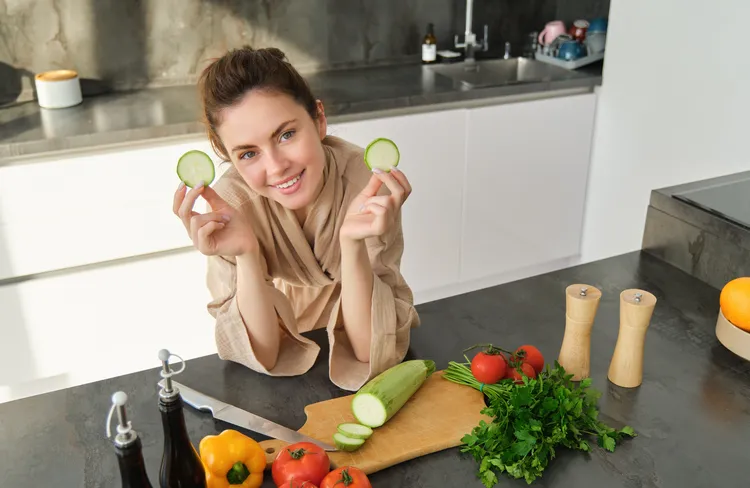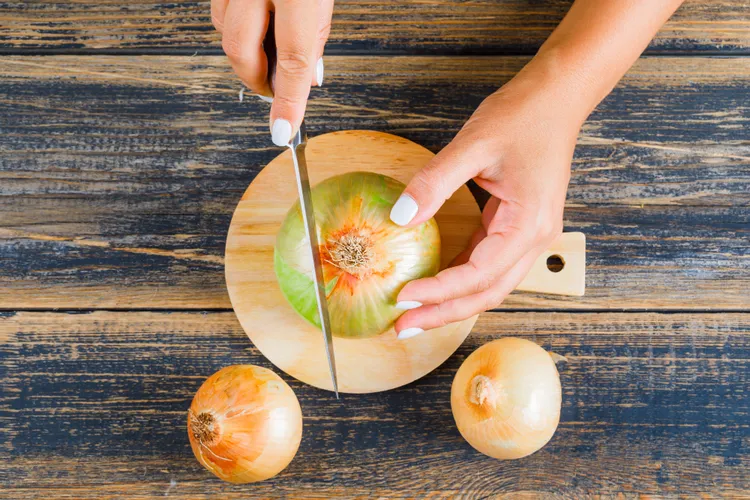People Count Calories, But How Many Count Chemicals? The Case for Home Cooking
In today’s fast-paced world, calorie counting has become a cornerstone of health-conscious living. Apps track every bite, and nutrition labels are scrutinized for their energy content. But while we obsess over calories, a critical aspect of our diet often goes unnoticed: the chemicals in our food. From artificial preservatives to synthetic flavorings, these substances lurk in processed foods, impacting our health in ways that calorie counts can’t capture. This blog post explores why we should pay attention to the chemicals in our food, the hidden risks of processed diets, and why home cooking is a powerful tool for reclaiming control over what we eat.

The Calorie Obsession: What We’re Missing
Calories are a measure of energy, and tracking them can help with weight management or fitness goals. But calories tell only part of the story. A 100-calorie snack pack of cookies and 100 calories of grilled chicken breast may be equal in energy, but their impact on your body is vastly different. The cookies likely contain refined sugars, trans fats, and chemical additives, while the chicken offers protein, vitamins, and no synthetic extras.
The problem is that processed foods dominate modern diets. According to a 2016 study published in BMJ Open, nearly 60% of calories in the average American diet come from ultra-processed foods - products packed with additives like artificial colors, flavors, emulsifiers, and preservatives. These chemicals are designed to enhance shelf life, texture, and taste, but their long-term effects on health are concerning.
While calorie counting is useful, it ignores the quality of food and the potential harm of chemical additives. So, what are these chemicals, and why should we care?
The Chemicals in Our Food: What’s Lurking in Your Plate?
Processed foods are a chemical cocktail. Here’s a closer look at some common additives and their potential risks:
- Artificial Sweeteners (e.g., Aspartame, Sucralose):
- Found in diet sodas, sugar-free snacks, and low-calorie desserts.
- Linked to gut microbiome disruption, increased appetite, and, in some studies, potential neurological effects.
- A 2022 study in Cell suggested artificial sweeteners may alter gut bacteria, impacting metabolism and immunity.
- Preservatives (e.g., Sodium Benzoate, BHA/BHT):
- Used to extend shelf life in packaged foods like chips, cereals, and baked goods.
- Some, like BHA, are classified as possible carcinogens by the International Agency for Research on Cancer (IARC).
- May cause allergic reactions or hyperactivity in sensitive individuals, particularly children.
- Artificial Colors (e.g., Red 40, Yellow 5):
- Common in candies, sodas, and processed snacks.
- Associated with behavioral issues in children, including ADHD-like symptoms, per a 2021 Lancet study.
- Some colors are banned in certain countries due to health concerns.
- Emulsifiers (e.g., Polysorbate 80, Carrageenan):
- Added to ice cream, salad dressings, and sauces for smooth texture.
- May disrupt gut health, promoting inflammation and conditions like irritable bowel syndrome, according to research in Nature (2015).
- Trans Fats and Partially Hydrogenated Oils:
- Found in fried foods, margarine, and some baked goods.
- Known to increase LDL (bad) cholesterol and heart disease risk.
- Though banned in many countries, they still appear in some products.
- Monosodium Glutamate (MSG):
- Enhances flavor in savory snacks, soups, and fast food.
- May trigger headaches, nausea, or “Chinese Restaurant Syndrome” in sensitive individuals, though evidence is mixed.
These additives are “Generally Recognized as Safe” (GRAS) by regulatory bodies like the FDA, but that designation often relies on outdated studies or industry-funded research. Long-term, cumulative exposure to these chemicals is poorly understood, and emerging science suggests they may contribute to chronic issues like obesity, diabetes, gut dysbiosis, and even cancer.
Why Counting Chemicals Matters
Unlike calories, which provide energy, many chemical additives offer no nutritional value and may pose risks. Here’s why paying attention to them is critical:
- Gut Health Impacts:
- The gut microbiome, home to trillions of bacteria, regulates digestion, immunity, and mental health. Additives like emulsifiers and sweeteners can disrupt this delicate ecosystem, leading to inflammation, bloating, or metabolic disorders.
- A 2020 study in Frontiers in Nutrition linked ultra-processed diets to reduced microbial diversity, a hallmark of poor gut health.
- Chronic Disease Risk:
- Diets high in processed foods are associated with higher rates of obesity, type 2 diabetes, heart disease, and certain cancers, per a 2019 The Lancet study.
- Chemicals like trans fats and preservatives may contribute to these risks by promoting inflammation or oxidative stress.
- Mental Health Connections:
- Emerging research links processed diets to mood disorders. A 2022 Nutritional Neuroscience study found that high intake of artificial additives correlated with increased anxiety and depression symptoms, possibly due to gut-brain axis disruption.
- Hidden Allergies and Sensitivities:
- Additives like MSG or artificial colors can trigger reactions in sensitive individuals, ranging from headaches to skin rashes. These symptoms are often misattributed to other causes.
- Environmental and Ethical Concerns:
- Many additives are produced through energy-intensive processes or derived from non-sustainable sources. Choosing whole foods reduces your environmental footprint and supports ethical food systems.
Counting chemicals doesn’t mean memorizing every ingredient label (though that helps). It’s about prioritizing whole, minimally processed foods to minimize exposure to these substances.
The Case for Home Cooking
If processed foods are the problem, home cooking is the solution. Preparing meals from scratch gives you control over what goes into your body, reduces reliance on chemical-laden products, and offers a host of other benefits. Here’s why home cooking is a game-changer:
- Control Over Ingredients
When you cook at home, you decide what goes into your meals. Instead of relying on pre-packaged sauces or frozen dinners, you can use fresh vegetables, herbs, and high-quality proteins. This eliminates most additives and lets you tailor meals to your dietary needs (e.g., gluten-free, low-sodium, or vegan).
Example: A store-bought pasta sauce might contain high-fructose corn syrup, sodium benzoate, and MSG. A homemade version with tomatoes, garlic, olive oil, and basil is free of additives and just as delicious.
- Improved Nutritional Quality
Home-cooked meals are typically higher in nutrients and lower in unhealthy fats, sugars, and sodium. A 2017 American Journal of Preventive Medicine study found that people who cook at home consume more fruits, vegetables, and fiber while eating fewer calories and less processed food.
Tip: Batch-cook staples like grilled chicken, roasted veggies, or quinoa to make healthy meals convenient during busy weeks.
- Cost Savings
Eating out or buying processed foods can strain your budget. Home cooking is often cheaper, especially when you buy in bulk or use seasonal produce. A 2021 Journal of Nutrition Education and Behavior study estimated that home-cooked meals cost about half as much as restaurant or takeout meals.
Example: A homemade stir-fry with rice, veggies, and tofu costs a fraction of a similar takeout dish and yields leftovers for multiple meals.
- Better Portion Control
Restaurants and packaged foods often serve oversized portions, contributing to overeating. At home, you can plate appropriate portions and avoid the temptation of “supersized” servings.
- Strengthened Family and Social Bonds
Cooking at home fosters connection. Whether it’s a family dinner or a potluck with friends, shared meals build relationships and create lasting memories. A 2018 Appetite study linked frequent family meals to better mental health and dietary habits in children and teens.
- Mindfulness and Creativity
Cooking is a creative outlet that encourages mindfulness. Chopping vegetables, experimenting with spices, or perfecting a recipe can be meditative and rewarding. It also deepens your appreciation for food and its origins.
- Reduced Environmental Impact
Home cooking lets you choose sustainable ingredients, like locally sourced produce or plant-based proteins. It also reduces packaging waste from processed or takeout foods, aligning with eco-conscious values.
Overcoming Barriers to Home Cooking
Despite its benefits, home cooking can feel daunting. Common barriers include time constraints, lack of skills, or limited access to fresh ingredients. Here’s how to overcome them:
- Time-Saving Strategies:
- Meal Prep: Dedicate a few hours on weekends to prep ingredients or cook meals in bulk.
- One-Pot Meals: Make soups, stews, or sheet-pan dinners to minimize cleanup.
- Slow Cookers/Instant Pots: These appliances simplify cooking with minimal hands-on time.
- Building Skills:
- Start with simple recipes, like scrambled eggs or roasted vegetables, and gradually try more complex dishes.
- Watch free cooking tutorials on YouTube or platforms like X for inspiration.
- Practice basic knife skills or seasoning techniques to boost confidence.
- Budget-Friendly Tips:
- Shop for seasonal produce, which is often cheaper and fresher.
- Buy staples like rice, beans, or spices in bulk to save money.
- Repurpose leftovers into new meals (e.g., roast chicken into tacos or soup).
- Access to Ingredients:
- If fresh produce is scarce, use frozen or canned options, which retain nutrients and are affordable.
- Explore community gardens, farmers’ markets, or food co-ops for local, chemical-free ingredients.
- Making It Fun:
- Involve family or roommates in cooking to share the workload.
- Experiment with global cuisines, like Thai curries or Mexican salsas, to keep things exciting.
- Play music or listen to podcasts while cooking to make it enjoyable.
Practical Steps to Start Counting Chemicals and Cooking More
Ready to reduce chemical exposure and embrace home cooking? Here’s a roadmap:
- Audit Your Pantry:
- Check labels for additives like artificial colors, sweeteners, or preservatives.
- Gradually replace processed items with whole foods, like swapping canned soup for dried lentils or canned fruit for fresh apples.
- Plan Your Meals:
- Create a weekly menu to streamline grocery shopping and reduce food waste.
- Include a mix of proteins (e.g., chicken, tofu), carbs (e.g., rice, sweet potatoes), and vegetables for balanced meals.
- Stock Essential Tools:
- Basic equipment like a chef’s knife, cutting board, and non-stick pan makes cooking easier.
- Invest in a slow cooker or blender if your budget allows for added versatility.
- Read Labels Wisely:
- Choose products with short, recognizable ingredient lists.
- Avoid items with vague terms like “natural flavors” or “artificial ingredients.”
- Track How You Feel:
- Note changes in energy, digestion, or mood after reducing processed foods.
- Use a journal or app to connect dietary shifts with health outcomes.
The Bigger Picture: A Call to Rethink Food
Counting calories has its place, but it’s time to broaden our focus. The chemicals in processed foods are silent disruptors, accumulating in our bodies and environment with unknown consequences. By cooking at home, we reclaim agency over our health, wallets, and planet. It’s not about perfection - swapping one takeout meal for a homemade salad is a victory. It’s about progress, mindfulness, and rediscovering the joy of real food.
Home cooking is more than a chore; it’s an act of self-care and rebellion against a food system that prioritizes profit over health. So, the next time you reach for a packaged snack, ask yourself: How many chemicals am I eating today? Then head to the kitchen, chop some veggies, and savor the power of a home-cooked meal.









